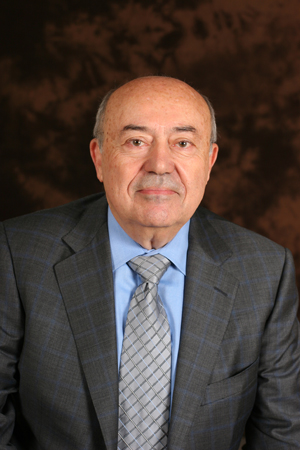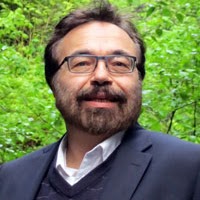Audio signal processing is a subfield of signal processing that is concerned with the electronic manipulation of audio signals. Audio signals are electronic representations of sound waves—longitudinal waves which travel through air, consisting of compressions and rarefactions. The energy contained in audio signals or sound power level is typically measured in decibels. As audio signals may be represented in either digital or analog format, processing may occur in either domain. Analog processors operate directly on the electrical signal, while digital processors operate mathematically on its digital representation.
Speech processing is the study of speech signals and the processing methods of signals. The signals are usually processed in a digital representation, so speech processing can be regarded as a special case of digital signal processing, applied to speech signals. Aspects of speech processing includes the acquisition, manipulation, storage, transfer and output of speech signals. Different speech processing tasks include speech recognition, speech synthesis, speaker diarization, speech enhancement, speaker recognition, etc.
Linear predictive coding (LPC) is a method used mostly in audio signal processing and speech processing for representing the spectral envelope of a digital signal of speech in compressed form, using the information of a linear predictive model.

Digital audio is a representation of sound recorded in, or converted into, digital form. In digital audio, the sound wave of the audio signal is typically encoded as numerical samples in a continuous sequence. For example, in CD audio, samples are taken 44,100 times per second, each with 16-bit sample depth. Digital audio is also the name for the entire technology of sound recording and reproduction using audio signals that have been encoded in digital form. Following significant advances in digital audio technology during the 1970s and 1980s, it gradually replaced analog audio technology in many areas of audio engineering, record production and telecommunications in the 1990s and 2000s.

Andrew James Viterbi is an Italian Jewish–American electrical engineer and businessman who co-founded Qualcomm Inc. and invented the Viterbi algorithm. He is the Presidential Chair Professor of Electrical Engineering at the University of Southern California's Viterbi School of Engineering, which was named in his honor in 2004 in recognition of his $52 million gift.
Lawrence R. Rabiner is an electrical engineer working in the fields of digital signal processing and speech processing; in particular in digital signal processing for automatic speech recognition. He has worked on systems for AT&T Corporation for speech recognition.
Code-excited linear prediction (CELP) is a linear predictive speech coding algorithm originally proposed by Manfred R. Schroeder and Bishnu S. Atal in 1985. At the time, it provided significantly better quality than existing low bit-rate algorithms, such as residual-excited linear prediction (RELP) and linear predictive coding (LPC) vocoders. Along with its variants, such as algebraic CELP, relaxed CELP, low-delay CELP and vector sum excited linear prediction, it is currently the most widely used speech coding algorithm. It is also used in MPEG-4 Audio speech coding. CELP is commonly used as a generic term for a class of algorithms and not for a particular codec.
Thomas Kailath is an Indian born American electrical engineer, information theorist, control engineer, entrepreneur and the Hitachi America Professor of Engineering emeritus at Stanford University. Professor Kailath has authored several books, including the well-known book Linear Systems, which ranks as one of the most referenced books in the field of linear systems.
Vector sum excited linear prediction (VSELP) is a speech coding method used in several cellular standards. The VSELP algorithm is an analysis-by-synthesis coding technique and belongs to the class of speech coding algorithms known as CELP.
Line spectral pairs (LSP) or line spectral frequencies (LSF) are used to represent linear prediction coefficients (LPC) for transmission over a channel. LSPs have several properties that make them superior to direct quantization of LPCs. For this reason, LSPs are very useful in speech coding.

Thomas Shi-Tao Huang was a Chinese-born American computer scientist, electrical engineer, and writer. He was a researcher and professor emeritus at the University of Illinois at Urbana-Champaign (UIUC). Huang was one of the leading figures in computer vision, pattern recognition and human computer interaction.
Gerhard M. Sessler is a German inventor and scientist. He is Professor emeritus at the Department of Electrical Engineering and Information Technology of the Technische Universität Darmstadt.
James Loton Flanagan was an American electrical engineer. He was Rutgers University's vice president for research until 2004. He was also director of Rutgers' Center for Advanced Information Processing and the Board of Governors Professor of Electrical and Computer Engineering. He is known for co-developing adaptive differential pulse-code modulation (ADPCM) with P. Cummiskey and Nikil Jayant at Bell Labs.
Fumitada Itakura is a Japanese scientist. He did pioneering work in statistical signal processing, and its application to speech analysis, synthesis and coding, including the development of the linear predictive coding (LPC) and line spectral pairs (LSP) methods.

Manfred Robert Schroeder was a German physicist, most known for his contributions to acoustics and computer graphics. He wrote three books and published over 150 articles in his field.

Georgios B. Giannakis is a Greek-American Computer Scientist, engineer and inventor. He has been an Endowed Chair Professor of Wireless Telecommunications, he was Director of the Digital Technology Center, and at present he is a McKnight Presidential Chair with the Department of Electrical and Computer Engineering at the University of Minnesota.

An audio coding format is a content representation format for storage or transmission of digital audio. Examples of audio coding formats include MP3, AAC, Vorbis, FLAC, and Opus. A specific software or hardware implementation capable of audio compression and decompression to/from a specific audio coding format is called an audio codec; an example of an audio codec is LAME, which is one of several different codecs which implements encoding and decoding audio in the MP3 audio coding format in software.

Dr. Nikil Jayant is an Indian American Engineer. He obtained his PhD in Electrical Communication engineering from the Indian Institute of Science in Bangalore, India. Dr. Jayant is Emeritus Chaired Professor at Georgia Institute of Technology where he served as a Georgia Research Alliance Eminent Scholar and as the Executive Director of the Georgia Centers for Advanced Telecommunication Technology. He has also served as an Adjunct Professor with the University of California at Santa Barbara.
Ranjan Kumar Mallik is an Indian electrical and communications engineer and a professor at the Department of Electrical Engineering of the Indian Institute of Technology, Delhi. He held the Jai Gupta Chair at IIT Delhi from 2007 to 2012 and the Brigadier Bhopinder Singh Chair from 2012 to 2017. He is known for his researches on multiple-input multi-output systems and is an elected fellow of all the three major Indian science academies viz. Indian Academy of Sciences, Indian National Science Academy, and The National Academy of Sciences, India. He is also an elected fellow of The World Academy of Sciences, Indian National Academy of Engineering, and The Institute of Electrical and Electronics Engineers, Inc.

John Makhoul is a Lebanese-American computer scientist who works in the field of speech and language processing. Dr. Makhoul's work on linear predictive coding was used in the establishment of the Network Voice Protocol, which enabled the transmission of speech signals over the ARPANET. Makhoul is recognized in the field for his vital role in the areas of speech and language processing, including speech analysis, speech coding, speech recognition and speech understanding. He has made a number of significant contributions to the mathematical modeling of speech signals, including his work on linear prediction, and vector quantization. His patented work on the direct application of speech recognition techniques for accurate, language-independent optical character recognition (OCR) has had a dramatic impact on the ability to create OCR systems in multiple languages relatively quickly.







